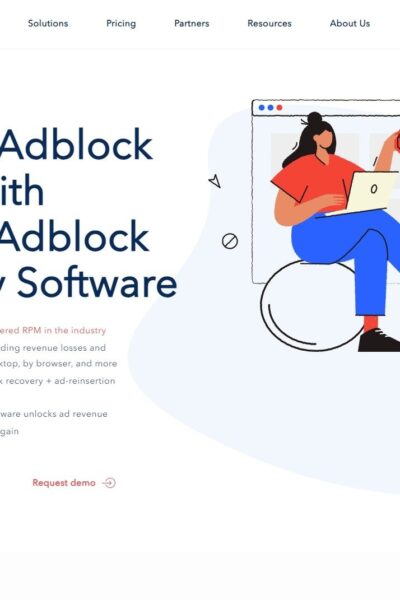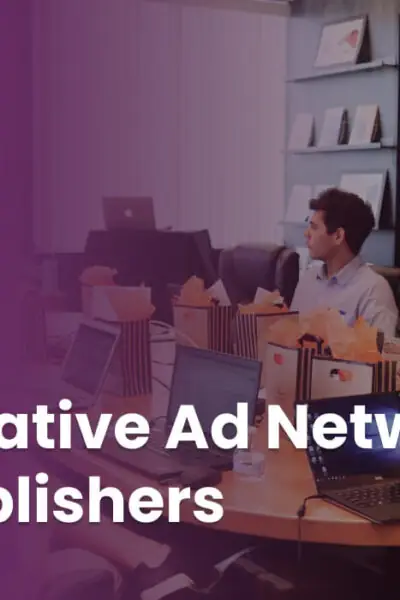Adblocking has become synonymous with the disruption of a browser’s user experience when consuming content on the net, and many publishers are increasingly losing revenue as a result of the practice. However, many industry bodies, such as the IAB and Adchoices.com, are trying to create an alternative’ co-existence in the arms race and advertising framework between publishers and users.
State of Digital Publishing had the opportunity and pleasure to speak with Dan Rua, CEO of Adblock Analytics and anti adblock platform Admiral. He provided us with a comprehensive overview of adblocking – how it started, where it is today and where he believes it’s heading, along with some of its challenges and solutions.
What was the internet like before the introduction of adblockers?
The internet used to foster a symbiotic and sustainable relationship between content creators, publishers, and consumers, spawning many of the free websites that are household names today such as Google, Facebook, Yahoo, and Twitch plus millions of blogs, forums and outlets for individuals to have a voice in the world. Much of that still exists since the launch of adblockers, but the sustainability of the free internet is at risk.
How do adblockers technically work?
Most adblockers today operate as browser extensions or ad-free browser apps, although some have tried to push ISP-level adblocking. Those adblocking extensions monitor every site a person visits and watch for signals to detect and block ads. Those signals could be a network call to a third-party ad server or analytics provider or tracking scripts that enable more relevant advertising. They could also be on-page elements that adblockers believe signal an ad placement. Those decisions are made possible through the use and integration of filter lists like Easylist, distributed to millions by Adblock Plus. These filter lists include thousands of sites or elements that facilitate ads.
Adblockers and their filter lists sometimes get too aggressive with their blocking, degrading user experience by blocking key website functionality or circumventing copyright access controls. Adblockers ultimately have to walk the line between blocking ads without degrading user experience or circumventing copyright access controls that could bring legal liability.
How would a publisher determine whether a user has ad blocking enabled and if so what is the opportunity cost?
Interestingly, many of the industry’s most trusted analytics tools, including Google Analytics, ComScore, and others get blocked by some adblockers. That means that not only are ads not showing, but entire groups of users are visiting without a publisher knowing.
Therefore, most publishers adopt some form of adblock detection or adblock-specific analytics to understand their adblock exposure, measuring blocking rates and lost revenue down to the ad impression and dollar level. Publishers can drill down the data, segment it according to the user agent, geography, and many other data points.
What do you interpret the outcome of what Google’s Ad Block solution will result in for Publishers?
Admiral just published a primer for publishers on the Google Chrome adblocker rumor. Every time adblocking gets attention in the media, there’s a bump in adblock adoption growth. Therefore, the initial impact, if Google does release a Chrome adblocker, will be the growth of block rates and more lost publisher revenues.
However, it doesn’t sound as if Google is launching an adblocker. Google may instead be releasing a bad ads filter in Chrome – much the way it already has a pop-ups filter. Blocking bad ads in a way that supports the IAB’s work on LEAN ads and research from the Coalition for Better Ads should be great for users and publishers long-term (disclaimer: I’m on the IAB’s AdblockWorking Group). But it won’t stop adblocker extensions growth unless Google also blocks those extensions in the Chrome store.
Our research with adblocking users indicates that they block for a multitude of reasons that extend beyond specific ad units that Chrome might filter. Much the way free music trained users to expect things to be free, adblockers are training people to expect an ad-free internet, and that won’t stop with a Chrome bad ads filter. Therefore, the adblocking outlook likely gets worse for publishers before it gets better.
What is the current pain point with publishers and in trying to generate revenue?
The pain point for publishers is very straightforward. They are losing revenue due to fewer ad impressions served. Until they start measuring the losses, they can try to keep them out of sight, out of mind, but the losses are there just waiting to be recovered. That’s why the first step we recommend is to get an accurate measure of losses with Admiral’s free Measure.
If Measure shows low losses, a publisher might wait to see how blocking rates change over time. If Measure shows material losses, a publisher has multiple loss recovery options. Admiral offers Engage, Recover and Transact modules to recover revenue and grow user relationships going forward.
What are the current initiatives the industry is taking to ‘fight back against’ ad blocking? Are there more creative ways around still having to advertise without interfering with a site’s UX?
A few publishers’ alternatives that don’t involve direct revenue recovery include native ads, sponsored content, migration to mobile and relying upon platforms such as Google AMP and Facebook Instant Articles to avoid adblockers. Unfortunately, some of those carry large strategic consequences that could be worse for the publisher in the long term. Also, some are temporary, like native and mobile, because adblockers are already growing their capability to block native ads and their footprint to block mobile ads.
One reason adblocking is so painful for publishers is that most publishers only know their visitors as eyeballs rather than having relationships with them. The more relationships a publisher builds, the stronger it will be over the long term, regardless of the future of adblocking.
What are some case studies that Admiral can share on adblock recovery?
We’ve published results from some of our customers, including one publisher that achieved record recovery. We are about to release a case study about a publisher that recovered its lost revenue with unbelievable speed, getting back more than 50 percent of its losses within a week of learning Admiral existed. That said, we now have more than 2,000 publishers using Admiral around the world. One recurring theme we’ve seen for success is the need to be transparent with users about this problem. Don’t just surprise them with reinserted ads the way some anti-adblockers advocate. Sustainable adblock recovery requires a collaborative long-term view toward your visitors, not a short-term revenue grab.
How do you define digital publishing success and how does it measure in your own definition with Admiral?
Digital publishing success comes in all sizes, but it always equates to an aligned, sustainable, and symbiotic relationship between content creators and content consumers. Content creators exchange great content for some value that funds creating more great content.
For Admiral, we also focus on alignment of interests. Our business model puts us side-by-side with our publishers so we only earn revenue when they earn revenue. Our team previously built a large publisher that reached more than 100 million users worldwide. We know that only happens with attention to user experience and a focus on turning visitors into relationships.
What do the next few years ahead look like in digital advertising? If applicable, what alternative monetization models are being trialed by publishers?
Attention to ad quality, including new standards like LEAN, will result in a shake-up of winners and losers in the ad tech ecosystem. LEAN scoring is a complicated topic that includes multiple constituents, and it’s going to require entirely new platforms to measure and deliver optimal ad experiences.
That said, now that adblocking has introduced so many people to ad-free experiences, the doors could open to new models such as microtransactions and subscriptions, similar to a “Netflix of the Net” option where users can subscribe for a single price, getting a premium ad-free experience across a large network of sites in return. Just as paying monthly for a music service wasn’t obvious a decade ago, it’s possible that subscriptions could play a larger role for digital publishers in the next decade.
What is the future of ad blocking?
Unfortunately for publishers, adblocking has scratched an itch for users that isn’t going away anytime soon. The industry and individual publishers should continue to improve ad experiences, but adblocking is here to stay for the foreseeable future. However, as more publishers adopt solutions like Admiral, we could see network effects that slow adblocker growth and ultimately turn the tide. If not, our kids and grandkids may not have the same opportunities that we enjoyed to learn, be entertained and empowered by a sustainable, free internet.
So that’s the state of adblocking in a nutshell. I would love to hear your feedback and comments below about this interview. Let me know whether having video interview features with up-and-coming digital publishers is of interest.










[…] One reason adblocking is so painful for publishers is that most publishers only know their visitors as eyeballs instead of relationships. The more relationships a publisher builds, the stronger they will be long-term, regardless of the future of adblocking. For the full interview: The State of Adblocking […]